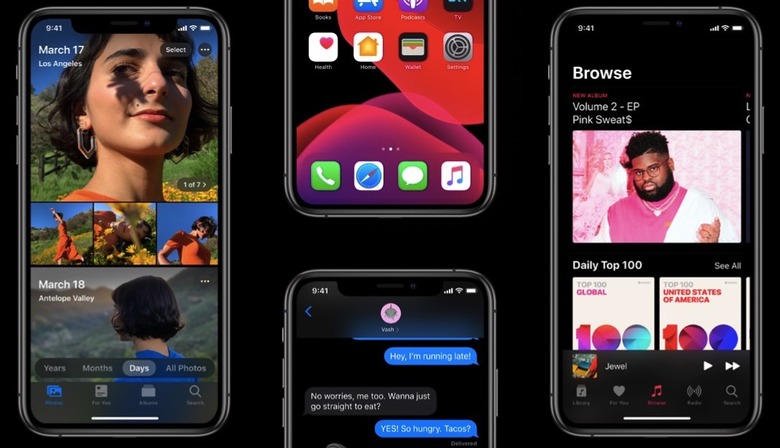iOS 13.1 Is Now Available To Download With Bug Fixes And New Features
Shortly before iOS 13 was seeded last Friday, Apple quietly announced that iOS 13.1 — originally slated to launch on September 30th — was having its release date moved up to September 24th. While Apple didn't disclose any details about why the release date was being pushed up, it's no secret that iOS 13 was abnormally buggy, which suggests that Apple wanted to get a more stable release out to users as quickly as possible.
Now, just four days after iOS 13 rolled out, iOS 13.1 and iPadOS 13.1 are available for iPhone, iPad and iPod touch. Whether you were patient enough to wait for this emergency update or upgraded to iOS 13 the minute it popped up last week, you should definitely update your compatible device to iOS 13.1 immediately.
In addition to containing a wide variety of security updates and bug fixes, iOS 13.1 also comes with a few new tricks, such as Share ETA for Maps, automated shortcuts for Siri, and improved device management for businesses. There are also several visual tweaks and additions that you may or may not notice when you update.
If you're wondering whether or not your device is compatible with iOS 13.1, we wrote up a full list below. Basically, if you bought your iPhone before 2015 or your iPad before 2014, you probably can't get iOS 13.1:
- iPhone XS
- iPhone XS Max
- iPhone XR
- iPhone X
- iPhone 8
- iPhone 8 Plus
- iPhone 7
- iPhone 7 Plus
- iPhone 6s
- iPhone 6s Plus
- iPhone SE
- 12.9-inch iPad Pro 3rd generation
- 12.9-inch iPad Pro 2nd generation
- 12.9-inch iPad Pro 1st generation
- 10.5-inch iPad Pro
- 9.7-inch iPad Pro
- iPad Air 3rd generation
- iPad Air 2
- iPad 6th generation
- iPad 5th generation
- iPad mini 5th generation
- iPad mini 4
- iPod touch 7th generation
In order to install iOS 13.1 or iPadOS on your iPhone, iPad or iPod touch, head to Settings > General > Software Update and then tap "Download and Install" at the bottom of the page. If you want, you can also install the update through iTunes by connecting your iOS device to a computer.
